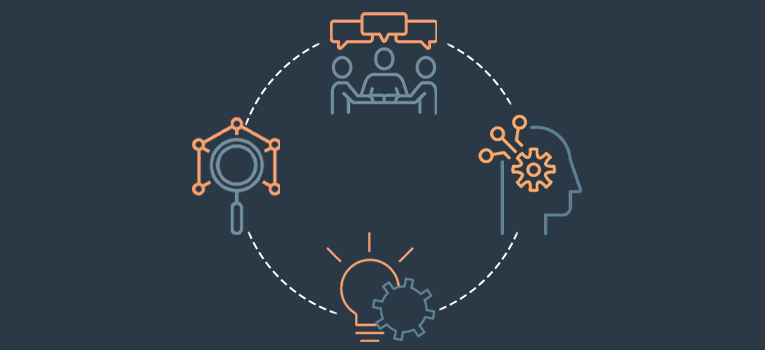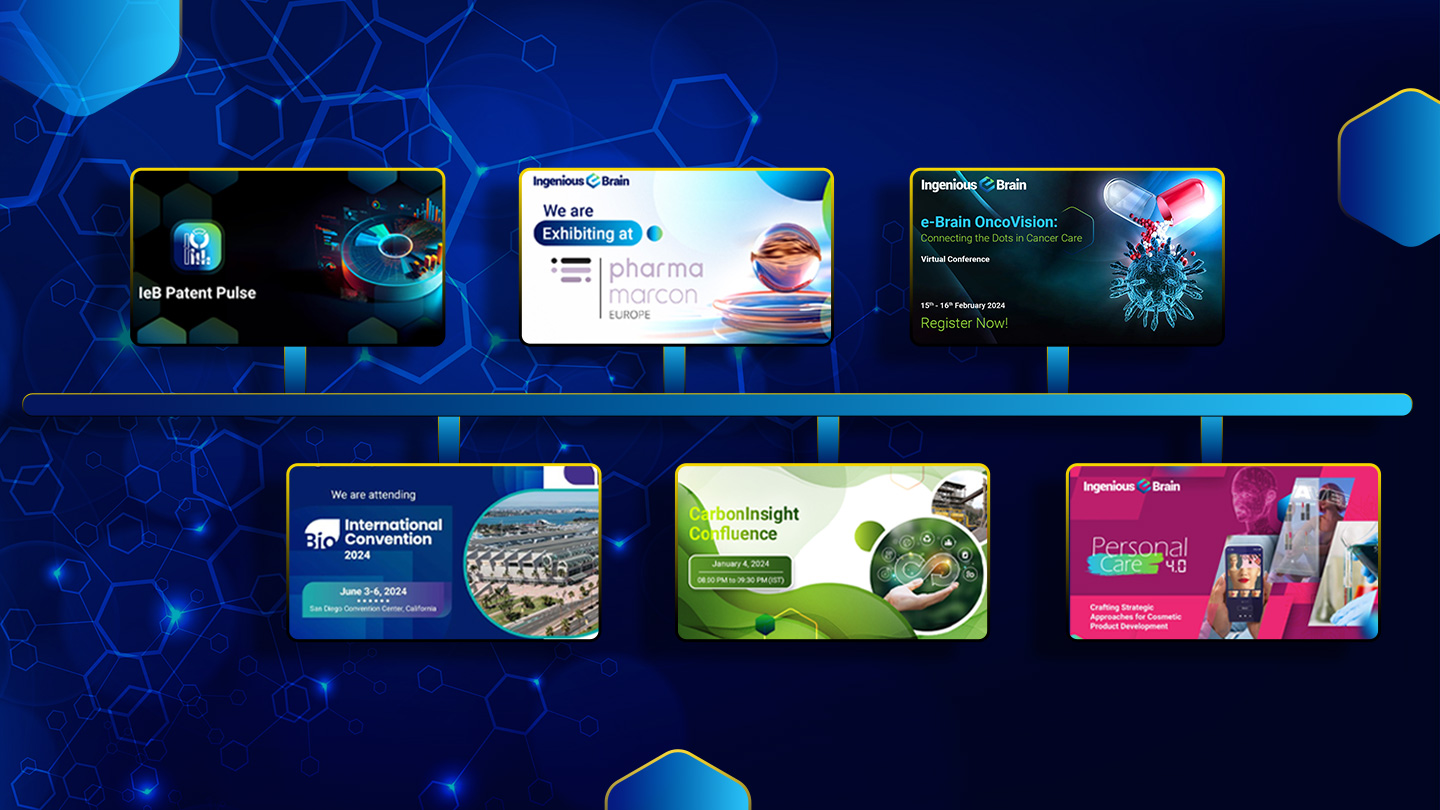One important lesson the COVID-19 pandemic has taught us is to refrain from getting stagnant and always keep looking for new technologies that are useful in the present and prove to be helpful in the future.
In this fast-paced environment, each company is looking for new technologies to enhance its portfolio and give it a competitive edge over its competitors. Companies need to understand technology scouting is the need of the hour. Investing in indigenous innovation solely will only help them grow to a certain degree.
Technology scouting is a process that identifies and evaluates all existing inventions in the domain and assists in developing new technologies or products from adjacent domains or industries too. It highlights all the significant aspects of the technology- like the research being carried out by universities, the activity of competitors in the domain, and patents present in accordance with that technology. All the technologies that could be utilized from other industries or domains are still not explored by anyone.
Process –
- Definition- a group of technology scouts are users who have a good understanding of the prevalent technologies and products in the domain. New technological opportunities are identified which have not been tapped into by the company.
- Information Sources- in this step, the scout selects the type of sources from which the required information is gathered. There are generally paid or open-source databases. The information is gathered through journals, technology reports, studies, and other databases such as Orbit Questel, Derwent Innovations, Web of Science, Scopus, and others, workshops, seminars, and conferences. A time period is chosen, and the searches for new technologies are carried out within that time frame.
- Data Assembly- After thorough research, the data is collected and stored for further analysis. However, the scouts keep on gathering information from informal sources.
- Data Interpretation- The data is filtered by the scout, which is then passed on for analysis and interpretation. It is believed that the best analysis takes place in the combined team of scouts and those receiving the information.
- Technology Mapping- In this step, scout maps identified technologies to the client’s need or requirement on how and where a client can utilize identified solutions or technologies for streamlining their processes and earning more profits.
- Technologies from Adjacent Industries- Finally, a team of experts finds out technologies available from adjacent industries or domains that could be utilized for better outcomes of the client company’s process.
Benefits of Technology Scouting –
1. Identification of emerging technologies- the company will easily identify new technologies in the domain and how they are penetrating the industry to generate more revenues, which prevents the company from making bad investment decisions.
2. Recognize the universities and emerging players working in the domain- universities and emerging players are termed oysters of innovation. The scouting process identifies the emerging technologies in a particular domain and determines whether the technology is available for commercialization or not.
3. Trends in a particular region- if a company wants to expand its business in a new location, the scouting process will help identify the top inventors, assignees, the filling trend, and consumer needs.
4. Patent identification is one of the most beneficial aspects of the scouting process as all the patents about the particular technology are found along with their current status. The company will easily decide which patents can be acquired, and if they are expired, they can carry out technology development in that domain at a significantly lower price.
5. Reducing R and D departments’ dependence- innovations in the internal R and D department become stagnant after some time. Scouting will help overcome that challenge and reduce the internal R and D departments.
6. Collaboration opportunity with universities or emerging players- the process will help in identifying the work being done by a university or emerging company on technology. If it fits the needs of the company, the scouting report can recommend a possible collaboration.
7. Recognizing Innovators- The scouting process will identify the work done by key players in that domain and what new technologies they are working on. It will also determine the emerging players heading into the market and the different concepts compared to the rest.
8. Identifying the least explored sectors in the domain will determine the most researched area in the domain and identify the sections of technology that have been worked upon the least.
9. Identification of technologies from adjacent domains: the scouting report provides a list of technologies being utilized by adjacent domains. For example, a food processing technology scout will identify technologies from nutraceutical, pharmaceutical, poultry, dairy, beverage, and other industries. This helps the client in exploring more applications of existing technologies.
Key Information Gathered Through Technology Scouting Studies
An extensively conducted technology scouting study can assist an organization in numerous ways. It helps in making sound decisions before investing in a particular technology.
1. Technology Problem Solving- It will provide solutions that are ready to use and employed by the company for their products. It will also be able to offer alternative methods to develop new technologies.
2. Key Players- The established players are identified along with their products in the technological sector. It also provides its positioning in the market.
3. Technology Foresight- It gives helpful alternative solutions relevant to a specific area. It also provides unknown technologies that the clients can judge whether they fit their business plans.
4. Patent Analysis- It assists in defining patent portfolios and identifies recent R and D activities. Clients will get to know the strategies being adopted by their competitors in the domain.
5. Comparative studies- Through this, the client receives a clear description of the technology of interest and gets a comparative description of the market’s products.
6. Scouting from Adjacent Industries- The study highlights what technological advancements are taking place in different domains and what technologies could be scouted from those to the client’s industry.
Technology Scouting Unveils Most & Least Innovated Areas in a Technology
Technology scouting studies tell about emerging or innovating technologies, markets, innovators, universities, and others. But also provides a detailed overview of white spaces in the technical domain where innovation could be carried out.
Integrating customized consulting and technology scouting can support organizations with efficient and effective strategic planning for their innovations, research, and development, especially regarding domain evaluation, idea generation, idea proofing, and project management for ideation conceptualization of technical advancements.
Technologies to be Scouted in 2021
1. Internet of Behaviors- It will be one of the most talked-about about technology in the coming years as it will involve the use of data and insights to bring behavioral change. With the help of IoB, businesses will identify consumers and how their behavior changes while using their platform. It will be able to monitor the consumer’s physical activity routine, diet, sleep, etc. According to reports, by 2025, almost half of the world will be tracked digitally using IoB tools.
2. Virtual, Augmented, and Mixed Reality- Virtual Reality creates a simulated environment of the real world using computer technologies and augmented reality adds to that environment using computer-generated elements. They will play a significant role in the healthcare industry in aiding patients suffering from depression, cancer, and autism.
3. Distributed Cloud- Cloud computing has been with us for a long time, and with distributed cloud coming into the fray, it will take the technology to the next level. With this technical data, data can be stored in different geographic locations and operated centrally by a public cloud provider. The companies will be able to benefit from reduced costs and latency and will decrease data loss.
4. Hyperautomation is a method that will augment the process in a much better way compared to the traditional automation process. It uses artificial intelligence, machine learning, process mining, etc. Hyper-automation will be able to streamline and optimize legacy business operations in companies.
5. Total Experience- As the COVID-19 pandemic has increased, remote working Total Experience aims to combine customer experience, user experience, and employee experience, enabling organizations to impart impactful solutions. This technology will be able to meet customer as well as employee expectations.
6. Cybersecurity Mesh- As each aspect of our lives is getting digital, a proper and more robust system is in place to protect those details. The critical element of this technology is that the security perimeter can be focused on a particular person or thing rather than covering a whole organization, which is a tedious task and leads to security breaches.



